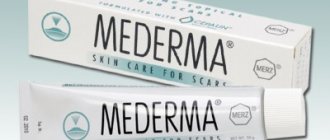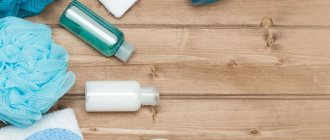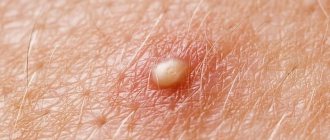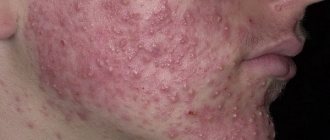Acne scars are mainly a consequence of improper care for problem skin and bring a lot of aesthetic discomfort. If the defect is pronounced and cannot be corrected using usual home methods, experts advise resorting to professional salon procedures. Already after the first visit to a cosmetologist, the effect will be noticeable.
For people interested in the question of how to remove acne scars, there are also some useful tips and methods to cleanse the skin and even out the microrelief. But it is worth noting that home remedies will only be effective for minor superficial defects, but they are unlikely to cope with deep and old scars.
Causes of Acne Scars
The main reason why scar defects form on the skin is improper care of problem skin.
Some patients neglect basic hygiene rules, which leads to disruption of the functioning of the sebaceous glands, the formation of deep inflammatory foci, which, after opening, do not heal for a long time, and scar tissue forms in their place.
Other common causes of acne scars include:
- Self-extrusion. It is not always possible to squeeze out a deep pimple on your own, as a result of which some of it remains under the skin. And if a person does not wash his hands before the operation and introduces an infection into the wound, an inflammatory complication often develops, which leads to uneven healing of the wound and scar formation.
- Incorrect treatment of acne. Acne, located deep under the skin and often inflamed, requires proper, professional treatment. If therapy is untimely or completely absent, the risk of developing complications, accompanied by the formation of various cosmetic defects on the face, increases.
- Attachment of a fungal infection. Fungal infections of the skin cannot always be diagnosed in a timely manner, which is why inflammatory processes progress. Inadequate treatment of this pathology often leads to inflammation and scarring of the connective tissue.
- Direct exposure to ultraviolet rays. If there is acne on the skin, the pigment substance melanin always accumulates in excess in areas prone to inflammation. When exposed to sunlight, melanin-rich acne becomes even darker, causing dark spots and scars.
Important tips and prevention
Cosmetologists gave a number of tips on the topic of preventing the occurrence of scars on the face :
- In the first minute after a skin injury, the wound should be treated with a 3% hydrogen peroxide solution.
- It is recommended to cover the wound with a plaster that does not stick to the wound.
- Don't forget to treat with antibacterial ointment.
- It is forbidden to squeeze pimples (especially with dirty hands!).
- It is advisable to eat foods rich in vitamin E every day.
- To avoid scarring, it is recommended to completely cure acne.
Types of scars and scars after acne
Acne scars come in the following varieties:
- Atrophic. The main reason for its occurrence is a deficiency of collagen in tissues. Such defects form in places where multiple rashes are localized, affecting the deep layers of the epidermis. Externally, an atrophic scar looks like a depression in the skin, brings a lot of aesthetic discomfort, and does not respond well to conservative treatment.
- Normotrophic. Outwardly they resemble spots that become more noticeable as the ambient temperature decreases. Such scars are flush with the skin.
- Hypertrophic. The main cause is excessive synthesis of collagen fibers. Hypertrophic scars are especially noticeable because they rise above the surface of the skin.
- Keloids. Outwardly they resemble hypertrophic ones, the reason for their appearance is the proliferation of connective tissues. As a rule, keloid scars are red in color and over time can increase in size, itch and cause discomfort. This type of scar is the least susceptible to cosmetic correction.
Considering how the defect looks externally, the following types of scars and acne scars are distinguished:
- Chipped. They resemble deep depressions, the edges of which seem to be chipped.
- Rectangular. Such scars are generally shallow, have a large area of distribution, and have chipped edges, the angle of which is straight.
- Rounded. The edges of the scar smoothly transition into healthy skin.
- Convex. They rise above the surface of the epidermis and have a smooth or rough surface.
Scars on the back
Hypertrophic raised scars most often form on the back and chest. They rise above the surface of the skin and may have a darker or lighter color. Scars do not extend beyond the original lesion and are easily corrected because they contain little scar tissue.
Welts and scars on the legs
Acne scars are least likely to occur on the lower extremities. This is explained by the fact that the skin on these parts of the body is denser and rougher than on the face, neck, and décolleté. A scar on the leg often occurs after squeezing out a pimple, infection of the wound and progression of inflammatory bacterial processes.
If the treatment of the complication is incorrect or untimely, the tissue in these places begins to scar.
What is the difference between acne signs and scars?
Acne is an inflammatory skin disease that develops against the background of dysfunction of the sebaceous glands and a decrease in the bactericidal properties of the epidermis. The sebaceous glands, under the influence of internal or external factors, produce a specific secretion in excess, which is not fully excreted, but remains in the sebaceous sac. The composition contains dead epidermal cells, microparticles of dust and other polluting components. As a result, the pores expand, pathogenic microflora are activated, which leads to the progression of inflammatory processes and suppuration.
A person does not treat acne, ignores the rules of personal hygiene, squeezes out the contents on his own, and a more aggressive bacterial infection develops. This leads to a serious inflammatory complication that spreads to the deeper layers of the dermis, where purulent pustules form. They gradually increase in size, merge with each other, and open up. After this, scars and scars form on the surface of the epidermis, which can only be gotten rid of with the help of a plastic surgeon.
Vascular problems
It is necessary to get rid of stagnant spots after acne in cases where the blood vessels do not narrow to the required size. Why is this happening? The vessels dilate in order to facilitate immune cells' access to the site of inflammation. However, sometimes after this a kind of failure occurs, and the situation does not improve even after the need to destroy the infection disappears. As a result, pink and red spots remain on the face, usually clearly visible.
What acne spot treatment can I use to correct the situation? There are several of them:
Panthenol promotes rapid tissue healing
- One of the best options is Panthenol. This cream for acne marks can have an amazing and fairly quick effect. In principle, panthenol is included in various face creams, but its content in them is small and will not give the desired result. The action of panthenol is based on a vasodilating effect. And, despite the fact that this seems illogical at first glance, the vessels begin to narrow as a result. Normalizing blood circulation makes them work in the correct mode and allows you to remove unpleasant stains. The main task is to apply the cream regularly.
Badyaga is one of the best remedies
- “Badyaga” is another effective remedy for acne spots. There are many drugs with a similar name; it is best to choose Badyaga Forte. It contains silica, crushed to a microscopic state. By applying the product to the face, a person feels like he is undergoing a micromassage. There is an effect on the deepest layers of the skin, as a result of which the vessels dilate - then everything follows the same pattern as in the case of Panthenol. The ointment is used several times a week. After applying for half an hour, this mask for red acne marks remains on the face and then washes off.
The combined use of the described means will give an excellent effect.
Real ways to quickly clear your face of scars in the salon
It is advisable to entrust the fight against acne scars to professional cosmetologists, who, after assessing the extent of the problem, will select the most effective treatment method. Therefore, it is extremely important to take a responsible approach to choosing a clinic and specialist, giving preference to well-established institutions that value their reputation.
How to get rid of acne scars using hardware methods?
Hardware techniques effectively combat acne scars of any degree of complexity. Modern cosmetology clinics have various effective ways to combat skin defects. The most effective are:
- Hardware peeling. Resurfacing of skin defects is provided by a special device that removes not only scars from the surface of the epidermis, but also deep wrinkles, folds, and creases.
- Plasmolifting. A popular injection technique during which the patient’s own platelet-rich plasma is injected subcutaneously. The substance triggers regenerative processes, due to which cells in problem areas are restored, and no trace remains of the scar after a pimple.
- Cryotherapy. Liquid nitrogen is used during the procedure. Under the influence of critically low temperatures, scars and cicatrices dissolve and completely disappear.
- Laser resurfacing. The laser's heat beams destroy the tissue that forms the scar. Thanks to this, the skin is smoothed and defects disappear.
- Mesotherapy. The essence of the technique is the subcutaneous administration of drugs containing hyaluronic acid. The substance stimulates the regeneration of epidermal cells. The procedure is effective for removing post-acne and deep scars formed at the site of inflamed acne.
- Physiotherapy. During the procedure, the properties of ultrasound, laser, and electric current are used. The hardware effect on the skin helps activate blood circulation, which accelerates regenerative processes in cells. Thanks to this effect, skin defects are smoothed out and become completely invisible.
Laser resurfacing.
A cosmetologist will tell you more about how to get rid of acne scars. The specialist will individually select the most effective method, taking into account the type of scars and their extent.
Darsonvalization of the face
Darsonvalization is a physiotherapeutic method, the essence of which is to influence problem areas of the skin with a high-frequency current of low strength. The procedure helps accelerate blood circulation, activate venous outflow, and accelerate regenerative processes in cells. Thanks to this effect, damaged tissues are restored, and clean, healthy skin remains in place of acne scars.
Cosmetology procedures
Acne scars, especially if they are old, there are many of them and they poison life with their presence, you cannot simply anoint them with some ointment, after which they will disappear. This defect is based on serious destabilization of the regenerative function of the dermis, so correction of the condition requires long-term and persistent treatment.
There are only two types of influence on scars: through cosmetic procedures and through surgery (a combination of these options is also possible).
What does professional cosmetology mean when treating post-acne scars:
- Exfoliation . The skin needs maximum cleansing of impurities, as well as removal of the outer layer of dead and keratinized particles, keratin layers. They create a serious obstacle to the penetration of medicinal substances into the middle layers of the skin (and the process of formation of new cells originates there), and significantly complicate the regeneration and natural renewal of the epidermis. To solve the problem of post-acne scars, various types of peeling are used: salicylic, herbal, glycolic, with AHA acids, retinoic, Jessner peeling with resorcinol. The option of mechanical exfoliation is also not excluded: dermabrasion, microdermabrasion. Scars are not eliminated with one session, depending on the degree of neglect of the problem, the result can be seen after 3-5 procedures.
- Microneedling . Simply put, the introduction of a specially selected serum through micro-punctures of the skin. The manipulation is carried out using a mesoscooter with optimally selected needle lengths. Provided that the serum is selected in accordance with the individual characteristics of the skin, the procedure has excellent results and helps reduce the severity of atrophic post-acne scars. The only drawback is that the visible effect, even with regular and long-term use of the method, will have to wait quite a long time, sometimes up to six months. But it is worth mentioning that scars, in principle, cannot be corrected in a short time.
- Injections. This method is used exclusively for the treatment of scars formed with excessive synthesis of collagen fibers, that is, with hypertrophic and keloid formations. It involves the introduction of various drugs using a syringe: steroids, antitumor antimetabolites (based on fluorouracil), interferons.
- Mesotherapy . In fact, it is almost microneedling, only the micropunctures are made deeper. For this, both syringes with an ultra-thin needle and a fractional method of controlled injury are used. This method allows you to deliver a special mesococktail to the desired depth in the mesoderm.
- Plasmolifting is indicated for the treatment of chronic persistent acne. To do this, purified patient plasma is injected into problem areas. This method not only helps strengthen the basic functions of the skin, but also increases the body's resistance to infections.
- Physiotherapy involves pharmacotherapy carried out using physical factors. Therapeutic substances are delivered to the middle layer of the skin using microcurrent, ultrasound, and active oxygen.
- Laser treatment . Allows you to have a stimulating effect on the skin without direct contact and damage. Using targeted light radiation, pathological collagen strands are destroyed and the natural production of skin cells in the basal layer is enhanced. Can be used in the form of laser resurfacing and the fraction method.
The method of eliminating post-acne and the choice of means for its implementation is selected individually, taking into account all the characteristics of the patient’s dermatological problems.
How to get rid of scars and scars after acne with medications?
Medical removal of post-acne and scars is started if the skin defects are mild, the scars are not old and their depth is small. Medicines should be prescribed only by a specialist. This is the only way to achieve a positive effect and prevent complications.
The following drugs are used to combat aesthetic defects:
- "Kontraktubeks". The active ingredients of the drug are heparin and allantonin. Activates regenerative processes in tissues, softens and resolves scars. The product is applied to the surface of the skin, the course of therapy is 4–8 weeks. After application, a slight burning sensation may occur, and 2-3 days after application, peeling appears.
- Heparin ointment. The composition includes heparin, which stimulates blood circulation and activates metabolic processes in epidermal cells. The ointment is used to remove post-acne that formed less than a year ago. The course of therapy is 4–10 weeks.
- "Dermatix". The active ingredients are silicon dioxide and organic compounds. The drug is produced in the form of a gel or silicone bandage. After application, a dense film is formed that softens the scar.
- "Panthenol". The drug, the active ingredient of which is panthenol, stimulates the processes of regeneration and cell restoration, promotes intensive skin hydration and smoothes out fresh scars. The course of therapy is 6–18 weeks.
Why do acne marks form?
Post-acne, otherwise called acne marks, are persistent changes in the skin that appear after acne. Not every pimple and not every person leaves a mark. For the formation of scars or pigmentation, the influence of one or more provoking factors is necessary.
These include:
- Long-term acne. Acne that has lasted for several years is much more likely to leave behind marks than acne that has been dealt with within 1-2 months. In this case, inflammatory changes attack the delicate skin of the face for a long time and thereby undermine its resources, disrupt regeneration processes and cause irreversible changes.
- Severe acne. With moderate and severe acne, deep inflammatory elements form on the face - purulent nodes, cysts, boils. They almost always lead to the appearance of scars, since they affect the lower layers of the skin and disrupt the restoration process of the epidermis.
- Squeezing pimples. In an effort to achieve a “clean face,” many people begin to squeeze out pimples on their own. However, without special cosmetology education, they do it roughly and ineptly, which can ultimately lead to vascular injury and the appearance of spots. This can also cause inflammation to spread to neighboring areas, penetrate deep into the skin and form scars.
Post-acne more often appears in people who neglect proper skin care and disinfection, in people with concomitant dermatological diseases, in diabetes mellitus and other types of metabolic disorders.
How to get rid of scars and scars after acne at home?
Homemade masks to combat scars and acne scars
A mask of honey and cinnamon restores and smoothes the skin well:
- Combine 1 tsp. fresh honey and cinnamon powder, mix well.
- Apply to pre-cleaned skin and leave for 15 – 20 minutes.
- Rinse your face with warm water.
Removing acne scars with cosmetic paraffin and wax
The essence of the procedure is the thermal effect on the skin. After applying paraffin or beeswax to problem areas, capillaries expand and blood circulation is activated. This helps improve nutrition and regeneration of damaged tissues.
The recipe for use is simple:
- Melt wax or paraffin in a steam bath.
- Cool to body temperature.
- Apply a thin layer to the skin with a special brush.
- Leave for 35 – 40 minutes.
- Remove residues with special oil.
Paraffin mask
Propolis against acne scars
To get rid of fresh scars, it is recommended to use a propolis mask, the recipe for which is given below:
- Melt 10 g of wax and 5 g of propolis in a steam bath.
- Add 1 tbsp to the mixture. l. olive oil.
- Cool the mixture to body temperature.
- Apply to affected areas, leave for 20 minutes.
Citrus fruits against acne scars
Citrus fruit juices are rich in vitamin C, which is a powerful antioxidant. To combat scars, you can use this home method:
- Soak a cotton pad in freshly squeezed lemon or other citrus juice.
- Apply the cotton wool to the problem area and secure.
- Keep the lotion for 15 – 20 minutes.
Avocado face mask
An avocado mask has a good effect in the fight against uneven skin:
- Grind the ripe avocado to a puree consistency.
- Add 1 tbsp. l. honey and juice of ½ lemon, mix the ingredients well.
- Apply the composition to the entire face, leave for 20 - 30 minutes, then rinse with warm water.
- Apply the mask every day until the skin imperfections disappear.
Cucumber juice for the face - benefits and application
Fresh cucumber juice has bactericidal properties and also lightens darkened skin. To combat scar defects, it is recommended to use cucumber lotion:
Squeeze juice from 1 cucumber using a juicer. Wipe the liquid over your entire face morning and evening. The course of therapy is 6 months.
Green tea for face - benefits and application
Green tea contains the substance catechin, which reduces inflammation, activates regenerative processes, and helps smooth out scars and scars. For treatment, you will need used sachets, which must be applied daily to the affected areas for 30 - 40 minutes.
Milk serum for face - benefits and application
Whey contains water (about 93%), as well as the following beneficial substances:
- amino acids;
- lactose;
- fatty acid;
- bacteria;
- milk sugar;
- vitamin and mineral complexes.
These components have a beneficial effect on the condition of the skin, help smooth out the microrelief and get rid of pigmentation and shallow scar formations. To achieve a positive effect, it is recommended to apply whey to the face every morning and evening and leave for 25 - 30 minutes. Then rinse off the product with warm water.
Homemade external remedies
If desired, you can make homemade ointments to get rid of scar formations. In terms of their effectiveness, they are no worse than ready-made pharmacy creams. Best recipes:
- You need to mix 1 tsp. honey with the same amount of ground cinnamon, and then apply the resulting thick mass to the cleansed problem areas. After 20 minutes, rinse off the product with warm water. The procedure is performed once a day, every other day.
- You need to mix 500 g of goose fat and ground Sophora japonica fruits, then steam the mixture for 4 days in a row (60 minutes every day). On the 5th day, apply the ointment to gauze and apply to the scars for 15 minutes.
- It is necessary to combine 400 ml of vegetable oil and 100 g of beeswax, and then keep the composition on low heat for 10 minutes and cool. Distribute the finished product over areas of skin with scar formations 2 times a day.
In addition, the cabbage-honey mask has good healing properties. To make it, grind the cabbage leaves in a blender and add 10 g of natural honey to the resulting pulp. Apply the product to the location of the scars and wash off with warm water after 2 hours. The procedure is performed twice a day for 3 weeks or 3 months.
How to get rid of scars and acne marks on the body?
Since there are several types of scars and acne scars, and the mechanism of their appearance may differ, the doctor selects an individual treatment regimen for the treatment of each individual case. After the examination, the doctor will decide which method is most effective for the patient and which one is better to refuse. In most cases, salon treatments are recommended. If desired, as an auxiliary therapy, you can use home remedies, the recipes of which should also be agreed upon with a specialist.
How to even out facial skin after acne?
Curing acne is much easier than dealing with the marks and scars that acne leaves behind. The main rule to follow is to use an integrated approach in the fight against skin defects. Effective ways to quickly and painlessly get rid of scar defects are salon procedures, the most useful of which are:
- laser resurfacing;
- mesotherapy;
- plasma lifting;
- ultrasonic, chemical or vacuum facial cleansing.
It is important to choose high-quality cosmetics for everyday care. It is better to give preference to products that contain substances that stimulate active cell regeneration. And also, do not forget about home remedies that are no less effective in fighting scars and scars.
The right makeup will help even out your facial skin after acne. All kinds of basic foundations, highlighters, foundations will help to perfectly disguise imperfections, make the skin smooth, even, radiant and attractive. It is advisable to choose products made from natural ingredients that do not cause irritation and the appearance of new rashes.
Chemical peeling
When carrying out a chemical peel, concentrated acid is applied to the skin, which specifically corrodes the top layer of the skin epithelium.
This helps form a new, healthy layer of skin. The texture becomes smooth and even. It is customary to distinguish between three types of peeling: deep, medium and superficial.
The depth of peeling will largely depend on the type of acid that is included in the product, as well as on how long it was applied to the skin.
Superficial peeling allows you to get rid of dead skin particles and the stratum corneum of the epidermis. You can do this type of peeling yourself at home. However, it will not help much if the scars are too severe.
Medium and deep peeling has a deeper effect, and at the same time they are more traumatic. They require a longer recovery period. These types of peeling cannot be done at home on your own. To do this you will have to visit a cosmetologist.
If acne leaves marks on your skin, then you shouldn’t worry too much about it. In order to get rid of them, many drugs and traditional medicine have been developed.
Rules for caring for skin with scars and acne scars
Skin prone to rashes and scars requires special care using special cosmetics selected by a dermatologist. To prevent the appearance of new scar formations and smooth out old ones, cosmetologists advise following these rules:
- constantly moisturize the skin;
- For hygiene procedures, use only mild cleansers;
- choose the right skincare products;
- do not self-medicate in case of complications;
- Healthy food;
- monitor the water balance in the body;
- Do not squeeze or pick pimples; entrust their removal to an experienced cosmetologist.
Contraindications for use
Not everyone can use anti-scar ointments. The main prohibition against their use is an allergic reaction to any component included in the drug. In addition, you should refuse treatment with external anti-scar agents if:
- herpes;
- postoperative scars;
- localization of scar formation near the mucous membrane;
- suppuration near the scar;
- problems with blood vessels.
Many ointments cannot be used during pregnancy and breastfeeding. Before starting treatment, it is better to consult a dermatologist.











